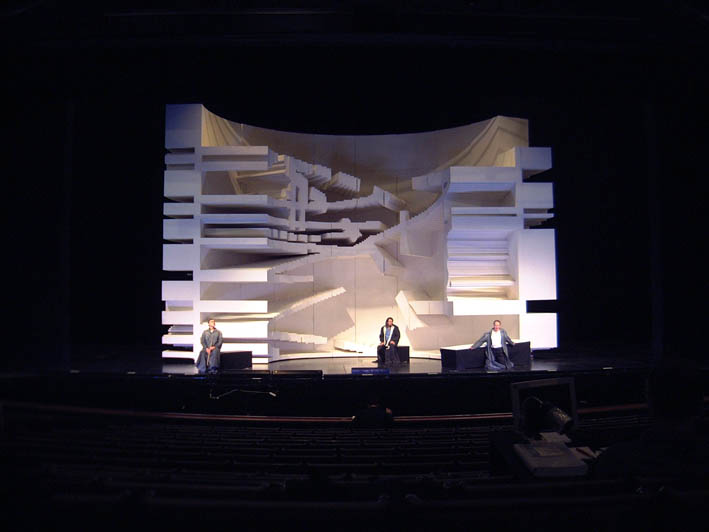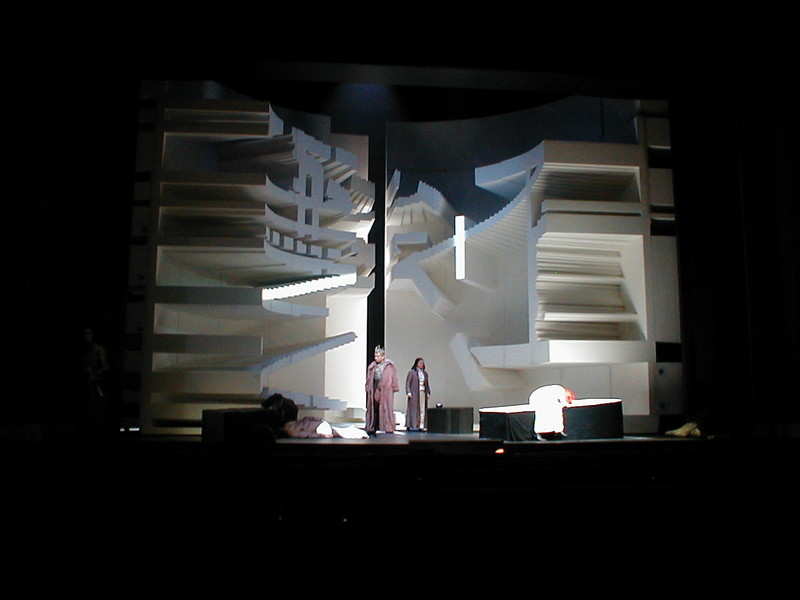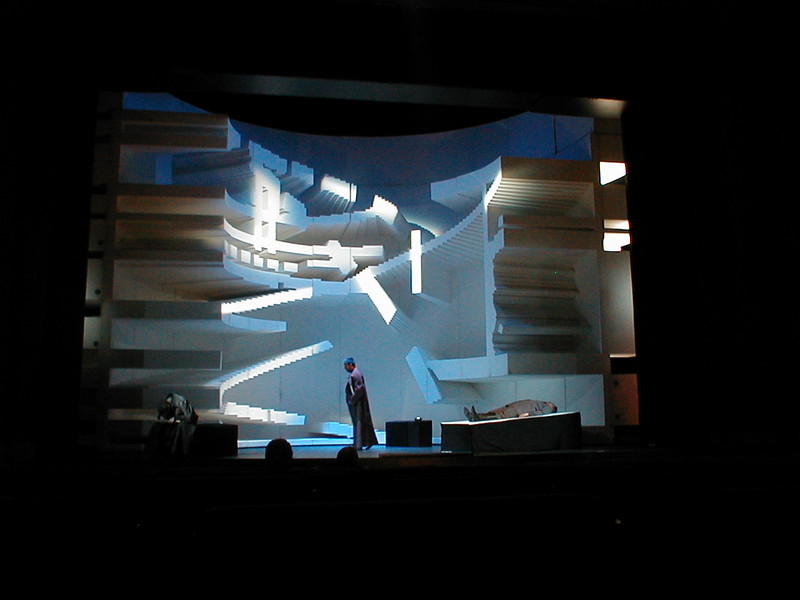
Tristan und Isolde
Salzburg, Austria
Stage Set and Costume Design
For a production of Richard Wagner's Tristan and Isolde in the Saarländisches Staatstheater in Saarbrücken, Germany, Daniel Libeskind designed the stage set and the costumes. The production opened to the public on April 1, 2001. It then travelled to Landestheater of Salzburg, Austria.
Daniel Libeskind为在萨尔布吕肯Saarländisches国家剧院演出的理查德.瓦格纳的作品“Tristan and Isolde ”设计了舞台及服装。
"The difference between architecture and theater is that in theater everything is built to disappear. Theater may not be made to last, but it is incredibly powerful. It creates memory and emotions which remain in the minds and hearts of the audience. This is what architecture and theater have in common. The effect is the same, only the means are different. In architecture we work with stone, concrete and glass, in theater only with paper, glue and light materials, but the memory is equally strong. The stage will always be part of architectural space – and of its duration.
"I do not like Richard Wagner as a person, I do not like the evil he has written. Tristan and Isolde, this special love-story is immune to all ideological faux pas he made. I am interested in the music and the relevance it has for us today. The music is mysterious, interesting and full of life and talks about subjects which have to do with life in general: Death, Life, Light, Darkness. The ambivalence of the music is part of the ambivalence of modernity.
"Working in a theater which was designed by the Nazis and given to town as a gift from Hitler certainly had an influence on my work. The stage set I designed related to this experience, but this experience is not depressing in a way that we can not overcome. We have to talk about this experience through the music, the stage, the emotions and the intellect of the audience. The Nazi-architecture of the building can not be ignored, it is there and there is an obvious relationship between the stage and the building, but in a very new and special way. The Nazi-architecture is horrible and ugly, because it contains the ideas of humanity at its most evil. Theater’s beauty is that in its experience you can forget all this - if the performance is good. When something exciting happens on stage and when the audience listens closely to the music, the architecture of the building shrinks.
"My set design does not deal with the narrative, the symbolic or the psychological, but with the music itself, with its structure, which of course was constructed on the base of Wagner’s libretto. The musical space contains the story. The set is not only abstract – the music is not always abstract either, but figurative. It deals with transformation, not with metaphors, but with metamorphosis."
Daniel Libeskind







 cityup.org 传真电话:010-88585380
cityup.org 传真电话:010-88585380